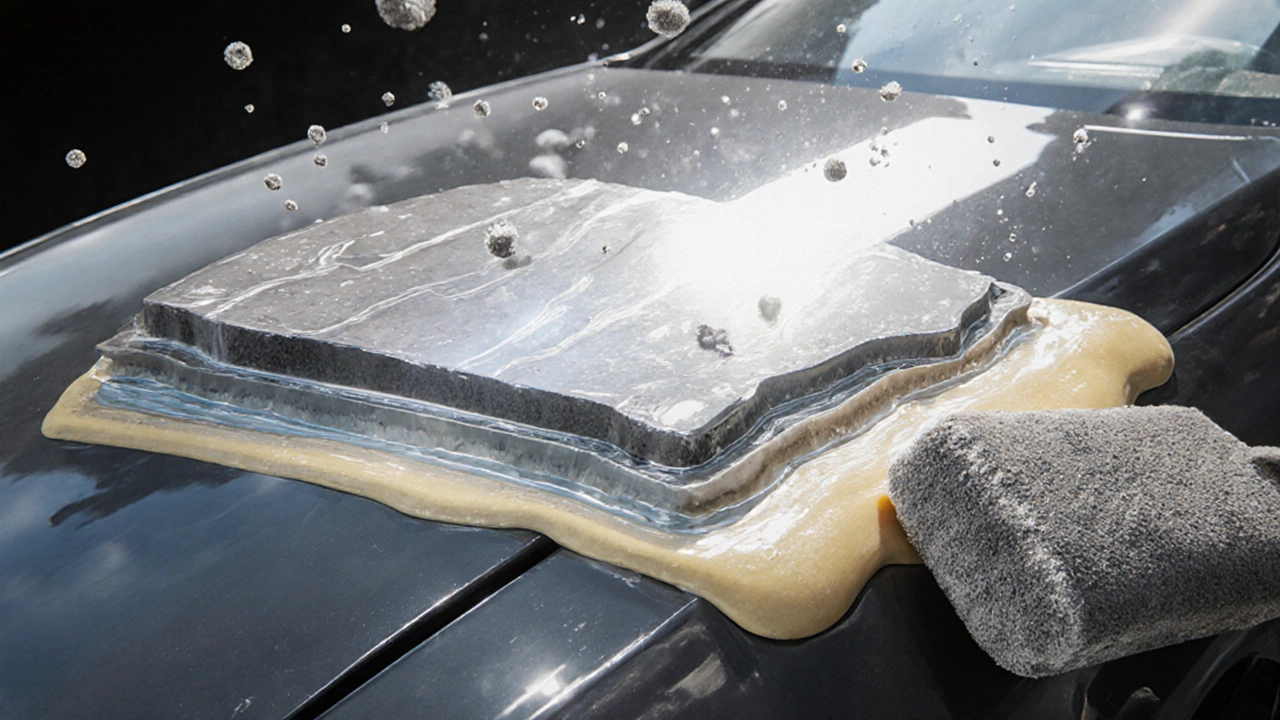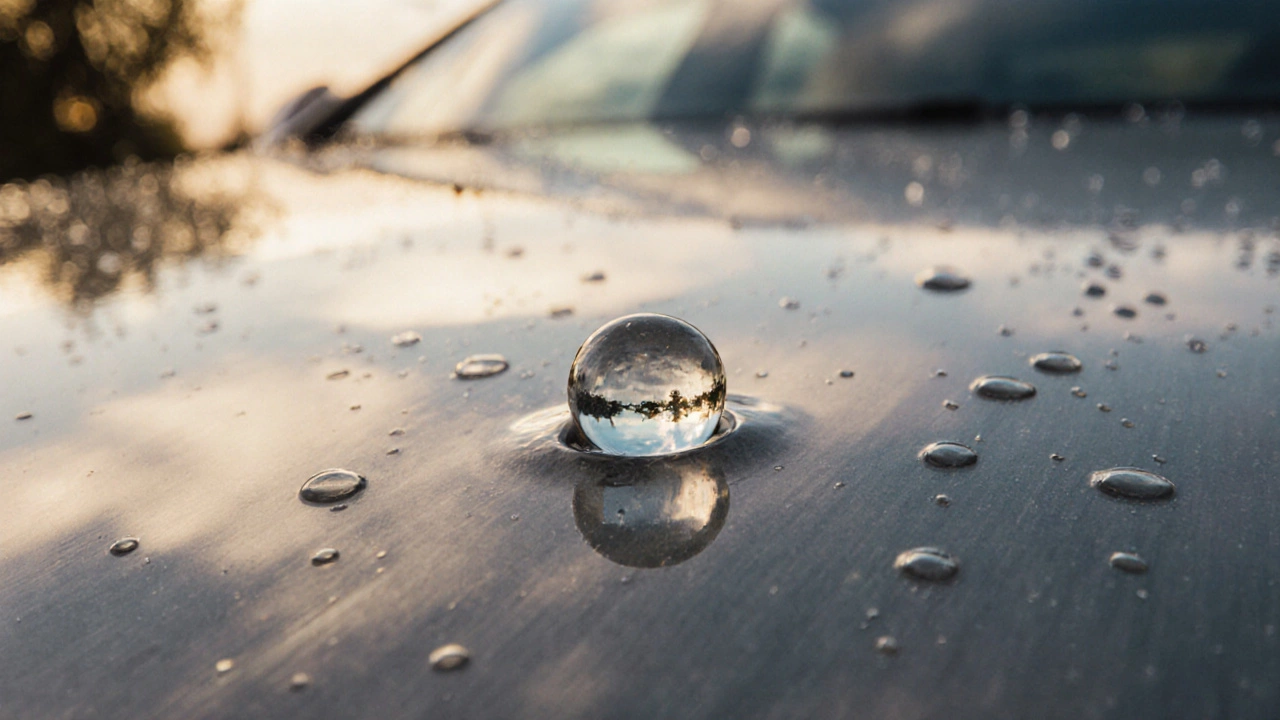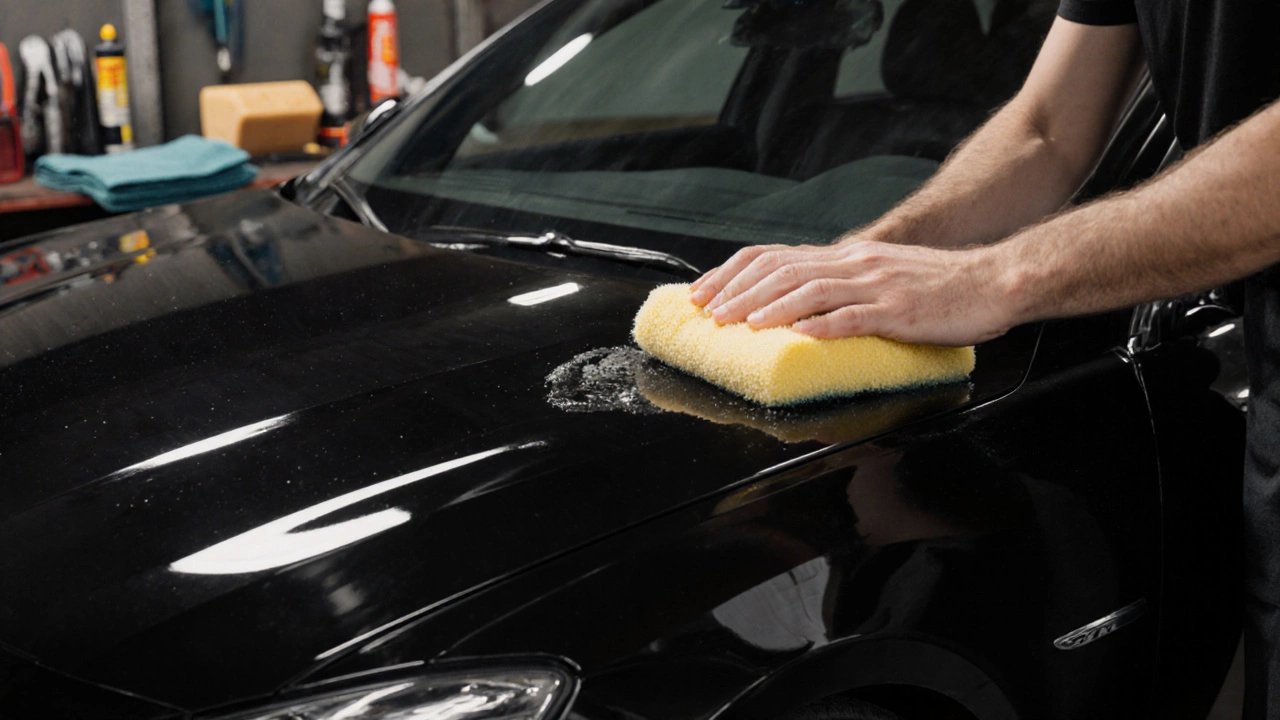Ever wonder why your car looks like it’s glowing after a professional detail? It’s not magic. It’s not even the expensive shampoo they use. It’s the wax. But not just any wax. Professional detailers don’t grab whatever’s on sale at the auto store. They pick products based on results, durability, and how the paint reacts under sunlight. If you’ve ever waxed your car and felt like it looked dull after a week, you’re using the wrong stuff.
What Makes a Wax Actually Work?
Not all waxes are created equal. There are three main types professionals use: natural carnauba wax, synthetic polymer sealants, and hybrid formulas. Each has strengths and weaknesses depending on the paint condition, climate, and how long you want the shine to last.
Real pros start with carnauba wax. It’s made from the leaves of the Brazilian carnauba palm tree. It’s the gold standard for depth and warmth in paint. A high-quality carnauba wax, like Meguiar’s Ultimate Paste Wax or Chemical Guys Butter Wet Wax, can give you a glow that looks wet even in flat daylight. But here’s the catch: it lasts 2-6 months, depending on how often you drive and where you park. If you’re in Melbourne and your car sits outside on the street, you’ll need to reapply every 3-4 months.
That’s where synthetic sealants come in. These are man-made polymers that bond to the paint like a second skin. Products like Gtechniq C2v3 or Adam’s Polishes Paint Sealant don’t give you the same depth as carnauba, but they last 6-12 months and resist UV rays, bird droppings, and acid rain way better. Detailers often use them as a base layer, then top it off with a thin coat of carnauba for show-quality shine.
Hybrid waxes? They’re the middle ground. Brands like Collinite 845 and Meguiar’s Hybrid Ceramic Wax combine carnauba with ceramic technology. You get some of the warmth of natural wax with the durability of synthetics. They’re the go-to for detailers who want balance - great looks without constant reapplication.
Tools of the Trade: It’s Not Just the Wax
Using the right wax is half the battle. The other half? How you apply and remove it. Professionals don’t use cheap foam applicators from the discount bin. They use high-density microfiber pads designed to spread wax evenly without scratching. Brands like Chemical Guys Microfiber Applicators or Lake Country HydroTech Pads are standard.
And the removal cloth? That’s where most amateurs mess up. You can’t use a t-shirt or an old towel. You need a plush, 100% cotton or ultra-fine microfiber towel with a low pile. The best ones are labeled “wax removal” or “detailing grade.” They don’t leave lint, and they don’t drag across the paint. A good towel can cost $20-$30, but one towel lasts for 20+ applications if you wash it properly - no fabric softener, just mild detergent.
Some detailers skip the cloth entirely and use a dual-action polisher with a finishing pad. It’s faster, more even, and reduces the risk of swirls. But it takes practice. If you’re new, stick to hand application. You’ll learn how the wax feels as it dries, and that’s critical.
How Professionals Prep Before Waxing
Waxing over dirt or contaminants is like putting a bandage on an infected cut. It looks fine until it isn’t. That’s why pros never wax a dirty car.
First, they wash the car with a pH-neutral shampoo - never dish soap. Then they clay bar the surface. A clay bar removes embedded contaminants like tree sap, industrial fallout, and brake dust that washing alone won’t touch. It’s like exfoliating your skin before applying moisturizer.
After claying, they dry the car with a clean, lint-free towel. Then they wipe down the surface with isopropyl alcohol (70% dilution) to remove any leftover oils or residue. Only then do they apply wax.
This prep step takes 30-45 minutes. The waxing itself? Maybe 15. But skipping prep means your wax will peel off in patches after a month. You’ll think the product was bad. It wasn’t. You just didn’t prep right.

What They Avoid
There are a few things pros never use - even if they’re popular online.
- Spray waxes for full coverage - they’re great for quick touch-ups between washes, but they don’t offer real protection or depth.
- Waxes with “ceramic” in the name unless they’re from trusted brands. Many cheap products just slap the word “ceramic” on the label to sound high-tech. True ceramic coatings require curing and are applied differently.
- Waxing in direct sunlight - the wax dries too fast, becomes hard to remove, and can leave streaks.
- Using the same towel for waxing and drying - contamination ruins the finish.
Top 5 Waxes Used by Pros (2025)
Based on real-world use in Melbourne’s variable climate - hot summers, wet winters, salty coastal air - here are the five waxes professional detailers reach for most often:
| Product | Type | Longevity | Shine Level | Best For |
|---|---|---|---|---|
| Chemical Guys Butter Wet Wax | Carnauba | 3-5 months | Extreme | Classic cars, deep black paint |
| Meguiar’s Ultimate Paste Wax | Carnauba | 4-6 months | Very High | Everyday drivers, easy application |
| Gtechniq C2v3 | Synthetic Sealant | 8-12 months | High | High-mileage cars, harsh weather |
| Collinite 845 Insulator Wax | Hybrid | 6-9 months | Very High | Enthusiasts, show cars |
| Adam’s Polishes Paint Sealant | Synthetic | 6-8 months | High | Low-maintenance owners, daily drivers |
Notice how none of these are sold in big-box stores? That’s not an accident. You’ll find these in detailer supply shops, online specialty retailers, or through professional detailers themselves. They’re not flashy. But they work.

How Often Should You Wax Your Car?
There’s no one-size-fits-all answer. But here’s the rule of thumb professionals follow:
- If you park outside - wax every 3-4 months.
- If you park in a garage - wax every 5-6 months.
- If you use a synthetic sealant - you can stretch to 8-12 months.
- If you wash your car weekly - your wax wears faster. Reduce wash frequency if you want longer protection.
And here’s a trick: after washing, spray water on the hood. If it beads up in tight, round droplets, your wax is still working. If it spreads out in sheets, it’s time to reapply.
What About Ceramic Coatings?
You hear a lot about ceramic coatings these days. They’re not wax. They’re a liquid glass that bonds to the paint and lasts 2-5 years. Pros use them for high-end builds or clients who want zero maintenance.
But they’re not for everyone. They cost $500-$1,500 to apply professionally. They require a perfectly clean surface. And if you mess up the application, you’re stuck with it - you can’t just wash it off. Most detailers still use wax for 90% of their jobs because it’s reversible, affordable, and gives better depth than most ceramics.
Think of wax like a daily moisturizer. Ceramic is like a cosmetic procedure. One you can do yourself. The other? You need a pro - and a big budget.
Final Tip: Less Is More
One of the biggest mistakes amateurs make? Using too much wax. A pea-sized amount per panel is enough. Spread it thin. Let it haze. Buff it off. More wax doesn’t mean more shine. It means more work, more streaks, and more wasted money.
Professional detailers aren’t trying to cover your car in wax. They’re trying to enhance the paint. The goal isn’t thickness - it’s clarity. You want the color to pop, not get buried under a layer of goo.
If you want your car to look like it just rolled off the showroom floor - use the right wax, prep properly, and don’t overdo it. That’s all it takes.
Can I use car wax on a matte finish?
No. Wax adds gloss, which ruins the matte look. Matte finishes require special sealants designed to protect without shine. Look for products labeled "matte paint sealant" or "flat finish protector."
Is spray wax worth it for regular use?
Only as a quick top-up between full wax applications. Spray waxes don’t provide lasting protection or deep shine. They’re great for maintaining a freshly waxed car, but not for starting from scratch.
How do I know if my wax is bad or expired?
If the wax smells sour, has separated layers, or feels gritty when you rub it between your fingers, it’s gone bad. Most waxes last 2-3 years if stored in a cool, dark place. Check the expiration date on the container - it’s usually printed on the bottom.
Can I wax my car in winter?
Yes, but only if the temperature is above 50°F (10°C). Cold wax won’t spread properly and can crack when buffed. If it’s freezing outside, wait for a warmer day or move the car into a heated garage for the process.
Do I need to wax a new car right away?
No. New cars come with a factory clear coat that needs 30-60 days to fully cure. Waxing too early can trap solvents underneath. Wait at least 45 days, then wash, clay, and wax for the first time.
If you’re serious about your car’s appearance, stop guessing. Use what the pros use. Prep right. Apply thin. Choose quality over convenience. Your paint will thank you - and so will your neighbors.


